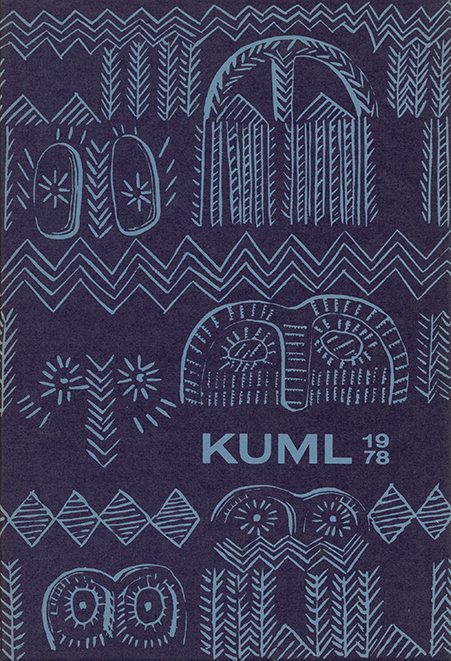The scale-worked flakes, a newly-discovered artifact type from the early Ertebølle culture of western Denmark
DOI:
https://doi.org/10.7146/kuml.v27i27.106889Keywords:
ertebølle, west denmark, scale-worked flake, brovstAbstract
The scale-worked flakes -a newly-discovered artifact type from the early Ertebølle culture of Western Denmark.
The transverse arrowhead occupies a characteristic and conspicious place among the implements of the Ertebølle culture, and it is thus natural that both the implement and its method of production have been the basis for several thorough discussions in the archaeological literature. (1)
Widespread excavation in the last few years of Ertebølle sites in Jutland has resulted in an important increase in our knowledge of both the early transverse arrowhead types and their method of production (2).
During excavation of the Brovst settlement (3) a characteristic artifact was noticed for the first time in the oldest levels (Levels 2 and 11); this artifact type has never before been described in the literature.
This artifact, figs. 1 to 10, occurred in such large numbers and with such a uniform morphology as to rule out the possibility of chance, and appears as a regularly produced type. The artifact, termed 'scale-worked flakes', has since been observed on many settlements belonging to the oldest phase of the Ertebølle culture in western Denmark.
The artifacts themselves are crude, thick, struck flakes with a regularly worked and retouched edge on the bulb of percussion end, fig. 1-10. This edge is usually straight, but can also be convex.
The working is always normal and always results in the removal of most of the original bulb of percussion end of the flake, fig. 1. On all the implements there are also scars indicating the removal of thin, scale-like flakes from the ventral surface, fig. 1-10. These scars appear only on the ventral surface and always emanate from the retouched edge, fig. 1.
The form and working of the described pieces shows that they form an artifact type clearly distinct from previously known and described artifacts from the Danish mesolithic.
A detailed analysis of the individual stages of preparation and utilization of these 'scaleworked flakes' shows that they are in fact the waste products resulting from the production of one or more small thin scale flakes from the ventral surface of the scale-worked flake itself. The retouched edge functioned as a prepared striking platform for the subsequent removal of the scale flakes from the ventral surface of the scale-worked flake. In fig. 5a reconstruction of the complete sequence of working is attempted.
The question remains as to what use the scale flakes were put. They are round or oval, and have a biconvex or lense shaped cross section; the side surfaces are perfectly smooth, fig. 11. It is evident that the symmetrical lense shaped cross section and the smooth surfaces were regularly sought after attributes. It was these needs which determined that the scale flakes were produced from the bulb of percussion of the scale-worked flakes; only here was the surface sufficiently convex and without irregularities.
The frequent appearence of 'scale flakes' and a count of the scars resulting from their removal on the scale-worked pieces' ventral surface shows that scale flakes must have been very common on settlements.
Small flakes with the required shape and form are present on settlements on which 'scaleworked flakes' have been observed; they are not known from sites from which 'scale-worked flakes' are absent. Small flakes are shown in fig. 11.
However the number of scale flakes is much smaller than would be expected from a count of the scars on the 'scale-worked flakes.' This can only be due to the fact that the scale flakes must have been worked further.
As a large proportion of the transverse arrowheads from the earliest Ertebølle finds are made from small, disc shaped flakes with a lense shaped cross section and smooth side surfaces, there are grounds for assuming that mass production of small flakes was intended for transverse arrowhead manufacture. This method of manufacture is also known from a much later period, namely the Early Neolithic, when flakes of thinbutted polished axes were used for transverse arrowhead production, fig. 14.
Thus the 'scale-worked flakes' must be regarded as a specialised and characteristic waste product from the production of transverse arrowheads.
During the excavation of Brovst, 'scale-worked flakes' were only found in the oldest levels, i.e. levels 2, 11, 8 and the lower part of 4 (3). Corresponding stratigraphic observations have been made at other early Ertebølle settlements. The 'scale-worked flakes' belong to a definite 'horizon' within the early Ertebølle culture, and may be dated to ca. 4600-3800 B.C. (conventional C14 years). 'Scale-worked flakes' seem to appear at the transition from the Kongemose to the Ertebølle cultures, and to be in use throughout the entire Norslund phase of the Ertebølle eulture, after which they disappear, being replaced by other core types, for example the discoidal core, fig. 17.
Geographically the artifact type is only known from Jutland, fig. 18, as well on inland and coastal settlements. The type is not known from eastern Denmark and thus helps underline regional differences between the early Ertebølle culture of east and west Denmark.
Søren H. Andersen
Downloads
Published
How to Cite
Issue
Section
License
Fra og med årgang 2022 er artikler udgivet i Kuml med en licens fra Creative Commons (CC BY-NC-SA 4.0).
Alle tidligere årgange af tidsskriftet er ikke udgivet med en licens fra Creative Commons.


